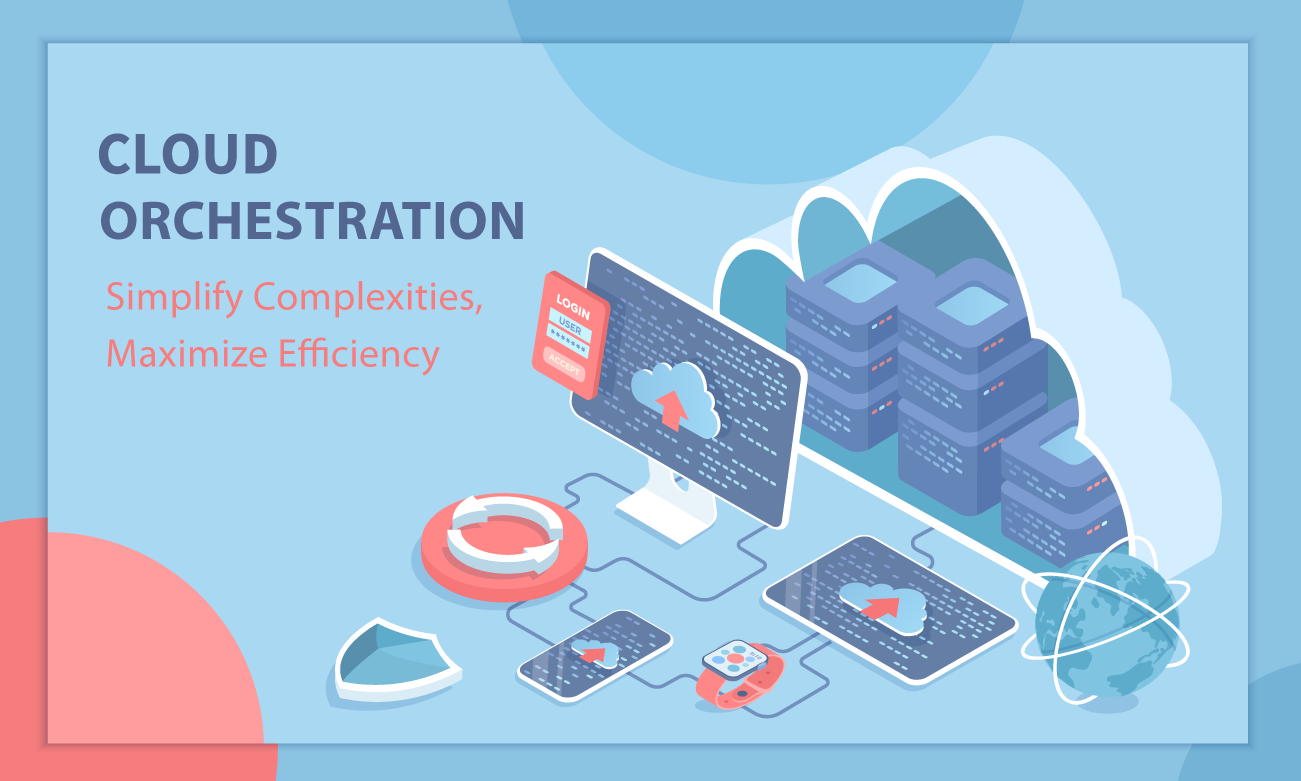Remember managing a complex construction project? You’ve got electricians, plumbers, carpenters, and painters – each expert in their field, but someone needs to coordinate their efforts to build a functional building. Cloud orchestration works the same way in the digital world, coordinating various cloud services and processes to create a seamless operational environment.

What Is Cloud Orchestration?
Think of cloud orchestration as your digital project manager. While individual teams or services might excel at their specific tasks, cloud orchestration ensures all components work together efficiently. It coordinates your various automated tasks, workflows, and processes across different cloud environments, ensuring everything happens in the right sequence, at the right time, with the right resources.
Orchestration vs. Automation: More Than Just a Word Game
Let’s clarify this with a practical example:
- Automation is like having a smart production line that assembles a product automatically. It handles a single task really well.
- Orchestration is like having an intelligent factory management system that not only runs the production line but also manages inventory, coordinates shipping, adjusts staffing, and ensures quality control across multiple production lines.
Orchestration encompasses automation but takes it several steps further by coordinating multiple automated tasks into a cohesive workflow.
Why Is Cloud Orchestration Necessary?
In today’s digital landscape, managing cloud resources manually is like trying to run a multinational corporation with paper ledgers and rotary phones. You might get by, but you’ll never thrive. Cloud orchestration becomes necessary when:
- You’re juggling multiple cloud environments
- Resource allocation needs to be dynamic and efficient
- Compliance and security requirements are strict
- Time-to-market needs to be faster
- Human error needs to be minimized
Cloud Orchestration in Action: Real-World Use Cases
Let’s make this concrete with some examples:
E-commerce Platform Scaling: Automatically adjusting server capacity, database resources, and caching based on customer traffic patterns.
Financial Services: Coordinating real-time data processing, security checks, and regulatory compliance across multiple geographic regions.
Healthcare Systems: Managing patient data access, application deployment, and disaster recovery processes across hybrid cloud environments.
Hybrid Cloud Management: Seamlessly orchestrate resources across public clouds, private clouds, and on-premises infrastructure, ensuring optimal performance and cost-efficiency.
Cloud Service Delivery: Provision and manage multi-tenant offerings with monitoring, reporting, Billing. Most importantly optimize resource allocations, compliance and security policies.
IaaS/PaaS Service Delivery: Efficiently manage infrastructure and platform services across multiple client subscriptions and cloud providers.
Benefits of Cloud Orchestration
- Time Savings: What used to take days now takes minutes
- Cost Reduction: Better resource management = lower cloud bills
- Enhanced Security: Consistent policy application across all clouds
- Improved Reliability: Reduced human error and standardized processes
- Scalability: Grow your infrastructure without growing your headaches
Choosing Your Orchestration Solution: What to Look For
Don’t just jump on the first orchestration platform you see. Consider:
Automation Capabilities: The tool should automate routine tasks for improved efficiency.
Compatibility: Does it integrate well with your existing cloud providers? It should integrate seamlessly with your existing cloud infrastructure.
Scalability & Flexibility: Can it grow with your business? The tool should be adaptable to changing cloud needs and environments.
Ease of Use: What’s the learning curve for your team? A simple, intuitive interface is essential for efficient management.
Support: Is there robust technical support available? A strong support network and active community are valuable.
Security Features: Does it meet your compliance requirements? Robust security features are paramount.
In conclusion, cloud orchestration is a powerful tool that can transform how organizations manage their cloud environments. By coordinating multiple automated tasks, orchestration enables greater efficiency, scalability, and security. By carefully selecting the right orchestration tool, organizations can reap the full benefits of this transformative technology.
Don’t let cloud complexity hold you back. With the right orchestration solution, you can focus on what really matters – growing your business.

